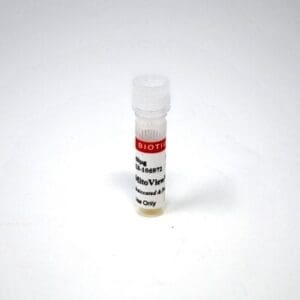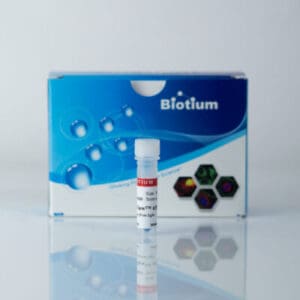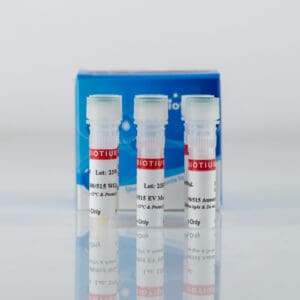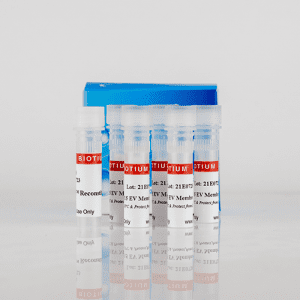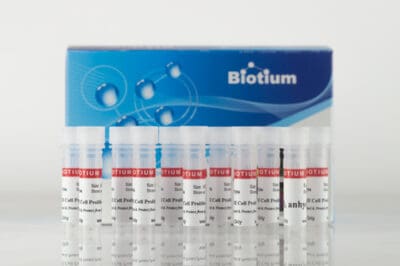
Fixable cytoplasmic stains for monitoring cell division by flow cytometry. The dyes can also be used to track cell populations in co-culture.
Features
- Non-toxic dyes covalently label cell cytoplasm for fixable staining
- Track cell proliferation in vivo or in vitro by dye dilution using flow cytometry
- Long term imaging of cell morphology or co-cultures by microscopy
- Excellent performance & lower cost compared to leading competitors
- ViaFluor® 405 & ViaFluor® 488 SE are much less toxic than CFSE
| Name | SKU | Size | Availability | Vendor | Price | Order | |
ViaFluor® CFSE Cell Proliferation Kit |
30050 | 10 vials | Generally 1-2 weeks from receipt of order | Biotium | Log in for pricing | ||
ViaFluor® 405 SE Cell Proliferation Kit (1 vial, 100 assays) |
30068-T | 1 vial | Generally 1-2 weeks from receipt of order | Biotium | Log in for pricing | ||
ViaFluor® 405 SE Cell Proliferation Kit (10 vials, 1000 assays) |
30068 | 10 vials | Generally 1-2 weeks from receipt of order | Biotium | Log in for pricing | ||
ViaFluor® 488 SE Cell Proliferation Kit, Trial Size (1 vial, 100 assays) |
30086-T | 1 vial | Generally 1-2 weeks from receipt of order | Biotium | Log in for pricing | ||
ViaFluor® 488 SE Cell Proliferation Kit (10 vials, 1000 assays) |
30086 | 10 vials | Generally 1-2 weeks from receipt of order | Biotium | Log in for pricing |
ViaFluor® SE Cell Proliferation Kits use amine-reactive dyes to covalently label cells throughout the cell cytoplasm and intracellular compartments for fixable fluorescent staining. Cell proliferation dyes are commonly used to monitor cell division by flow cytometry. The dyes also can be used to stably label cells to image cell morphology, or to track cell populations in mixed co-culture experiments.
Kit Components
- Lyophilized dye in single use vials
- Anhydrous DMSO for dissolving dye
Spectral Properties (Ex/Em after hydrolysis)
- ViaFluor® CFSE: 495/515 nm
- ViaFluor® 488 SE: 493/532 nm
- ViaFluor® 405 SE: 408/452 nm
- ViaFluor® 650 SE: 653/682
ViaFluor® SE Dyes for Cell Proliferation Tracking
ViaFluor® SE dyes are membrane-permeant compounds that are initially non-fluorescent esters, but are converted to fluorescent dyes by intracellular esterases and will covalently react with amine groups on intracellular proteins at the same time, forming fluorescent conjugates that are retained in the cell. Immediately after staining, a single bright fluorescent population will be detected by flow cytometry. With each cell division, daughter cells inherit roughly half of the fluorescent label, allowing the number of cell divisions that occur after labeling to be detected by the appearance of successively dimmer fluorescent peaks on a flow cytometry histogram compared to cells analyzed immediately after staining. Thus, cell proliferation dyes can be used to track multiple cell divisions of cells grown in culture or injected in vivo after labeling with the ViaFluor® SE dye.
The number of assays that can be performed per kit depends on the dye concentration used (see the product protocol for more information). When used at 1 uM to label 106 cells in one mL, each dye vial can be used for 90-100 labelings.
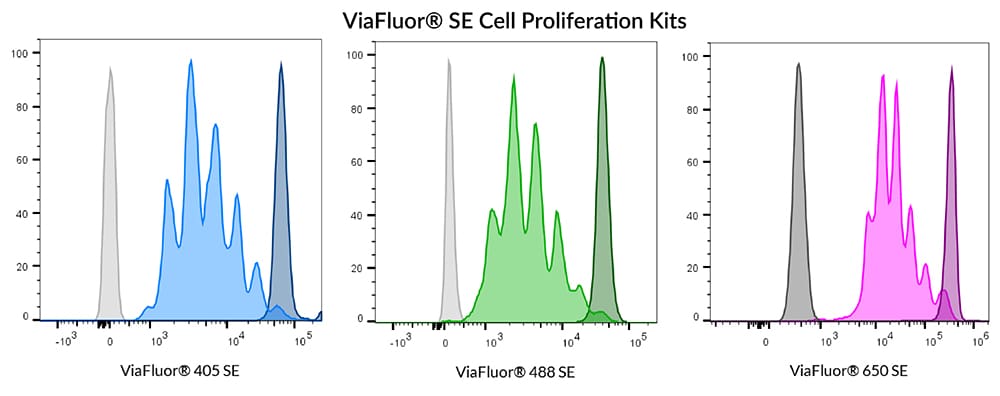
Human PBMCs were stained with ViaFluor® 405 (left), ViaFluor® 488 (center), or ViaFluor® 650 (right). Cells
were stimulated with Dynabeads® Human T-Activator CD3/CD28 beads and 100 ng/mL IL-2. Cells were analyzed
4 days post-induction. CD3+ T-cells are shown. Unstimulated cells (dark peaks) and unstained cells (gray)
are shown for comparison.
Other Applications for ViaFluor® SE Dyes
ViaFluor® SE dyes also can be used for imaging cell morphology or identifying cells in co-culture by microscopy. Because the staining is non-toxic and well-retained, it can be used for imaging live cells over time. See our Tech Tip: Using ViaFluor® SE Stains for Cell Tracing and Co-Culture.
All three ViaFluor® SE dyes can stain gram-positive bacteria, but not gram-negative bacteria. ViaFluor® CFSE stains the cytoplasm in yeast, but ViaFluor® 405 & ViaFluor® 488 stain the yeast cell periphery. See our Cellular Stains Table for more information on how our dyes stain various organisms.
Resources
Protocols
SDS
-
- SDS 30068-T, 30068, 30086-T, 30086, 30139-T, 30139, 30050_ViaFluor® SE-Cell Proliferation Kits_BE_en
- SDS 30068-T, 30068, 30086-T, 30086, 30139-T, 30139, 30050_ViaFluor® SE-Cell Proliferation Kits_CA_en
- SDS 30068-T, 30068, 30086-T, 30086, 30139-T, 30139, 30050_ViaFluor® SE-Cell Proliferation KitsUS_en
Supporting Documents

